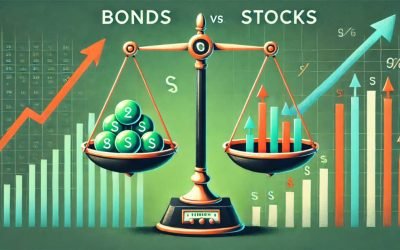Understanding the Fundamentals of Public Companies
Investing in public companies can be a lucrative endeavour, but it requires a thorough understanding of various factors that influence a company’s performance. This article aims to provide a comprehensive guide on how to analyse public companies before making an investment decision. By delving into financial statements, market position, management quality, and other critical aspects, investors can make informed choices that align with their financial goals.
Watch the Marks’s method of investing
Financial Statements: The Backbone of Analysis
Financial statements are the primary source of information for evaluating a company’s financial health. They provide insights into a company’s revenue, expenses, profitability, and overall financial stability. The three main financial statements to consider are the income statement, balance sheet, and cash flow statement.
Income Statement
The income statement, also known as the profit and loss statement, provides a summary of a company’s revenues and expenses over a specific period. Key metrics to focus on include:
- Revenue: The total income generated from sales of goods or services.
- Gross Profit: Revenue minus the cost of goods sold (COGS).
- Operating Income: Gross profit minus operating expenses.
- Net Income: The final profit after all expenses, taxes, and interest have been deducted.
Balance Sheet
The balance sheet provides a snapshot of a company’s financial position at a specific point in time. It includes assets, liabilities, and shareholders’ equity. Key components to examine are:
- Assets: Resources owned by the company, including cash, inventory, and property.
- Liabilities: Obligations the company owes to creditors, such as loans and accounts payable.
- Shareholders’ Equity: The residual interest in the assets of the company after deducting liabilities.
Cash Flow Statement
The cash flow statement tracks the flow of cash in and out of the company. It is divided into three sections:
- Operating Activities: Cash generated or used in the core business operations.
- Investing Activities: Cash used for investments in assets or received from the sale of assets.
- Financing Activities: Cash received from or paid to investors and creditors.
Market Position and Competitive Advantage
Understanding a company’s market position and competitive advantage is crucial for assessing its long-term potential. Factors to consider include:
- Market Share: The company’s share of the total market revenue.
- Competitive Landscape: The number and strength of competitors in the market.
- Unique Selling Proposition (USP): What sets the company apart from its competitors.
- Barriers to Entry: Factors that make it difficult for new competitors to enter the market.
Management Quality and Corporate Governance
The quality of a company’s management team and its corporate governance practices can significantly impact its performance. Key aspects to evaluate include:
- Experience and Track Record: The background and achievements of the management team.
- Leadership Style: The management’s approach to decision-making and problem-solving.
- Board of Directors: The composition and effectiveness of the board in overseeing the company’s activities.
- Transparency and Accountability: The company’s commitment to clear communication and ethical practices.
Industry Trends and Economic Factors
Industry trends and broader economic factors can influence a company’s performance. Consider the following:
- Industry Growth: The overall growth rate of the industry in which the company operates.
- Technological Advancements: Innovations that could impact the company’s operations or market position.
- Regulatory Environment: Laws and regulations that could affect the company’s business.
- Economic Indicators: Factors such as interest rates, inflation, and unemployment rates that can influence the company’s performance.
Valuation Metrics
Valuation metrics help determine whether a company’s stock is fairly priced. Common metrics include:
- Price-to-Earnings (P/E) Ratio: The ratio of the company’s current share price to its earnings per share (EPS).
- Price-to-Book (P/B) Ratio: The ratio of the company’s market value to its book value.
- Dividend Yield: The annual dividend payment divided by the current share price.
- Enterprise Value (EV) to EBITDA: The ratio of the company’s enterprise value to its earnings before interest, taxes, depreciation, and amortisation.
Risk Assessment
Assessing the risks associated with investing in a company is essential. Consider the following types of risks:
- Market Risk: The risk of losses due to market fluctuations.
- Credit Risk: The risk that the company may default on its debt obligations.
- Operational Risk: The risk of losses due to operational failures or inefficiencies.
- Legal and Regulatory Risk: The risk of losses due to legal or regulatory changes.
Analysing Historical Performance
Examining a company’s historical performance can provide insights into its stability and growth potential. Key areas to focus on include:
- Revenue Growth: The rate at which the company’s revenue has increased over time.
- Profit Margins: The consistency and trends in the company’s profit margins.
- Return on Equity (ROE): The company’s ability to generate profits from shareholders’ equity.
- Debt Levels: The company’s historical debt levels and its ability to manage debt.
Peer Comparison
Comparing a company to its peers can provide valuable context for its performance and valuation. Consider the following:
- Financial Metrics: Compare key financial metrics such as P/E ratio, P/B ratio, and dividend yield.
- Market Position: Assess the company’s market share relative to its competitors.
- Growth Rates: Compare revenue and profit growth rates with those of peers.
- Risk Factors: Evaluate the risk profiles of the company and its peers.
Analyst Reports and Market Sentiment
While it’s important to conduct your own analysis, reviewing analyst reports and market sentiment can provide additional insights. Consider the following:
- Analyst Ratings: The consensus ratings from financial analysts (e.g., buy, hold, sell).
- Price Targets: The target prices set by analysts for the company’s stock.
- Market Sentiment: The overall sentiment of investors and analysts towards the company.
- News and Events: Recent news and events that could impact the company’s performance.
Environmental, Social, and Governance (ESG) Factors
ESG factors are increasingly important in investment decisions. Consider the following:
- Environmental Impact: The company’s environmental practices and sustainability initiatives.
- Social Responsibility: The company’s commitment to social issues such as diversity and community engagement.
- Governance Practices: The company’s corporate governance policies and practices.
Using Financial Ratios for In-Depth Analysis
Financial ratios provide a deeper understanding of a company’s financial health. Key ratios to consider include:
- Liquidity Ratios: Measure the company’s ability to meet short-term obligations (e.g., current ratio, quick ratio).
- Profitability Ratios: Assess the company’s ability to generate profits (e.g., net profit margin, return on assets).
- Efficiency Ratios: Evaluate how efficiently the company uses its assets (e.g., asset turnover ratio, inventory turnover ratio).
- Leverage Ratios: Measure the company’s debt levels relative to its equity (e.g., debt-to-equity ratio, interest coverage ratio).
Creating a Comprehensive Investment Thesis
After conducting a thorough analysis, it’s essential to create a comprehensive investment thesis. This should include:
- Investment Rationale: The reasons for investing in the company.
- Key Assumptions: The assumptions underlying your investment decision.
- Potential Risks: The risks associated with the investment and how they will be managed.
- Expected Returns: The anticipated returns from the investment.
Monitoring and Re-Evaluating Investments
Investing is not a one-time activity; it requires ongoing monitoring and re-evaluation. Key steps include:
- Regular Reviews: Periodically review the company’s performance and financial health.
- Stay Informed: Keep up-to-date with industry trends, news, and events that could impact the company.
- Adjust Your Strategy: Be prepared to adjust your investment strategy based on new information and changing market conditions.
- Set Exit Criteria: Define criteria for when to sell the investment, such as reaching a target price or changes in the company’s fundamentals.
Conclusion
Analysing public companies before investing is a multifaceted process that requires a thorough understanding of financial statements, market position, management quality, industry trends, valuation metrics, and risk factors. By conducting a comprehensive analysis and creating a well-informed investment thesis, investors can make more confident and strategic investment decisions. Regular monitoring and re-evaluation are also crucial to ensure that investments continue to align with financial goals and market conditions.
Q&A Section
Q1: What are the key financial statements to analyse before investing in a public company?
A1: The key financial statements to analyse are the income statement, balance sheet, and cash flow statement. These provide insights into the company’s revenue, expenses, profitability, assets, liabilities, and cash flow.
Q2: Why is it important to understand a company’s market position?
A2: Understanding a company’s market position helps assess its competitive advantage, market share, and potential for long-term growth. It also provides context for evaluating the company’s performance relative to its competitors.
Q3: How can management quality impact a company’s performance?
A3: Management quality can significantly impact a company’s performance through effective decision-making, strategic planning, and leadership. A strong management team can drive growth, innovation, and operational efficiency.
Q4: What are some common valuation metrics used in investment analysis?
A4: Common valuation metrics include the price-to-earnings (P/E) ratio, price-to-book (P/B) ratio, dividend yield, and enterprise value (EV) to EBITDA. These metrics help determine whether a company’s stock is fairly priced.
Q5: Why is it important to consider ESG factors in investment decisions?
A5: ESG factors are important because they reflect a company’s commitment to environmental sustainability, social responsibility, and good governance practices. Companies with strong ESG practices are often better positioned for long-term success and may pose lower risks to investors.
Further reading:
Here are some excellent articles on how to analyze public companies before investing:
- NerdWallet’s Stock Research Guide: This guide breaks down the process of conducting stock research in five steps. It emphasizes fundamental analysis, assessing strengths, weaknesses, and growth prospects of companies, and the importance of understanding financial metrics like revenue and earnings growth, profit margins, and debt levels. It also covers qualitative aspects like company management and competitive positioning (NerdWallet: Finance smarter).
- Investopedia’s Financial Position Analysis: This article focuses on the critical importance of a company’s financial statements, such as the balance sheet and income statement, for assessing its financial health. It explains the key financial ratios, such as the current ratio and debt-to-equity ratio, and how these ratios can be compared to industry benchmarks to make informed investment decisions (Investopedia).
- DiscoverCI’s Financial Ratio Analysis: This resource dives deep into financial ratio analysis, highlighting metrics like Return on Equity (ROE), debt-to-equity ratios, and understanding company operations. It also stresses the importance of benchmarking companies against their industry peers for a comprehensive understanding (DiscoverCI).
- SoFi’s Stock Evaluation Tips: This guide emphasizes both quantitative and qualitative research methods, such as using ratios like debt-to-equity and Return on Equity (ROE) while also considering less tangible factors like a company’s brand power and intellectual property. It also provides advice on avoiding “value traps”—stocks that seem undervalued but carry hidden risks (SoFi).
Each of these articles offers practical insights for analyzing a company’s financial health and market position, which are essential before making investment decisions.















 How to trade CFD? (00:49)
How to trade CFD? (00:49) How to trade binary options*? (01:22)
How to trade binary options*? (01:22) Forex. How to start? (01:01)
Forex. How to start? (01:01)